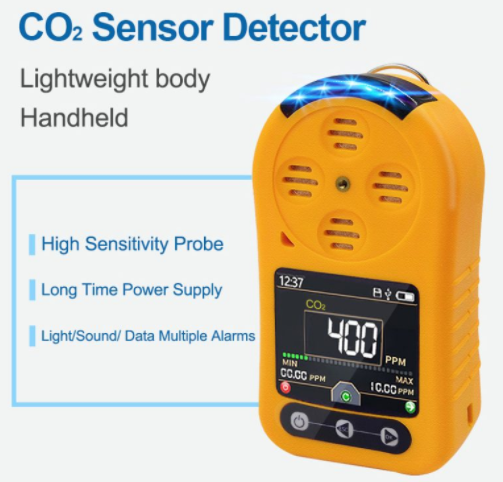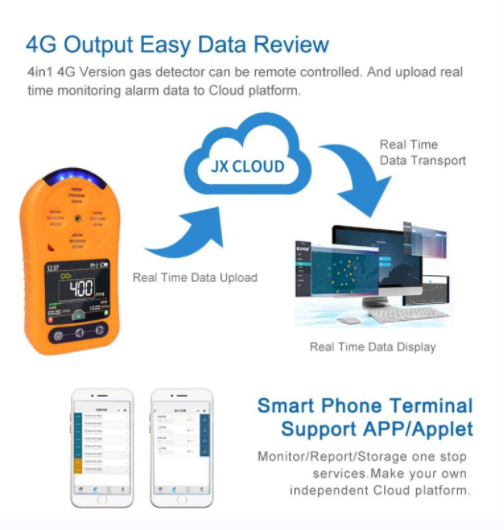Carbon dioxide (CO2) is an odorless, colorless gas that is naturally present in our environment. While it is essential for various biological processes, elevated levels of CO2 can pose significant health risks. In recent years, the use of carbon dioxide detector has become increasingly important to monitor and maintain safe CO2 levels in various settings. This article explores the significance of carbon dioxide detectors, their working principles, applications, and the benefits they offer in ensuring a safe and healthy environment.
Understanding Carbon Dioxide and Its Effects on Health:

High levels of CO2 can lead to several adverse health effects, including headaches, dizziness, fatigue, difficulty concentrating, and increased heart rate. Prolonged exposure to elevated CO2 concentrations may also contribute to respiratory issues, exacerbate pre-existing medical conditions, and impair cognitive function.
Working Principles of Carbon Dioxide Detector:
Carbon dioxide is through breath and break down the natural process and human activities such as fossil fuels. While outdoor CO2 levels typically range between 400-500 parts per million (ppm), indoor concentrations can be significantly higher due to inadequate ventilation and the presence of multiple sources.

Carbon dioxide detector employ various sensing technologies to measure and monitor CO2 levels accurately. Some common sensing methods include:
Non-dispersive infrared (NDIR) sensors: These sensors utilize ndir light to detect the presence of CO2 molecules. As CO2 absorbs specific wavelengths of infrared light, the sensor measures the amount of absorbed light and correlates it to the CO2 concentration in the air.
Electrochemical sensors: These sensors rely on the chemical reaction between CO2 and the sensing electrode within the detector. The resulting current or voltage change is proportional to the CO2 concentration and is measured by the device.
Metal oxide semiconductor (MOS) sensors: Although less common for CO2 detection, MOS sensors can be used to measure CO2 levels indirectly by detecting changes in temperature or resistance caused by the interaction between CO2 and the sensor material.
Applications of Carbon Dioxide Detectors:
Carbon dioxide detectors have a wide range of applications across various sectors, where maintaining optimal indoor air quality and ensuring occupant safety are paramount. Some common applications include:
Residential and commercial buildings: CO2 detectors are crucial in homes, offices, schools, and other enclosed spaces to monitor and maintain adequate ventilation. They help identify areas with high occupancy or poor airflow, which can lead to elevated CO2 levels and potential health risks.
Industrial and manufacturing facilities: Carbon dioxide detectors deal with carbon dioxide industry. They help monitor emissions, ensure worker safety, and comply with regulatory requirements.

Healthcare facilities: Hospitals, clinics, and long-term care facilities utilize CO2 detectors to maintain optimal indoor air quality and prevent the spread of airborne infections. Adequate ventilation and controlled CO2 levels are particularly important in surgical suites, isolation rooms, and waiting areas.
Educational institutions: Classrooms, lecture halls, and laboratories often experience high occupant densities and variable ventilation rates, making CO2 detectors essential for ensuring a conducive learning environment and preventing health issues related to poor air quality.
Transportation: CO2 detectors are installed in vehicles, aircraft, and submarines to monitor cabin air quality and prevent excessive CO2 accumulation, which can cause discomfort, drowsiness, and reduced cognitive function among occupants.
Benefits of Using Carbon Dioxide Detectors:
The use of carbon dioxide detectors offers numerous benefits in maintaining a safe and healthy environment, including:

Improved indoor air quality: CO2 detector help identify areas with poor ventilation or high occupancy, allowing for timely adjustments to ventilation systems and promoting better air circulation. This leads to reduced CO2 levels and improved overall indoor air quality.
Enhanced occupant comfort and productivity: By maintaining optimal CO2 concentrations, detectors contribute to a more comfortable and productive environment for residents, employees, students, and other occupants. Proper ventilation and air quality have been linked to increased cognitive function, focus, and overall well-being.
Energy efficiency: CO2 detectors can assist in regulating HVAC systems, ensuring that they operate efficiently without over-ventilating or under-ventilating occupied spaces. This leads to energy savings and reduced environmental impact.
Compliance with regulations: Many industries and facilities are subject to air quality and safety regulations that require the monitoring of CO2 levels. CO2 detectors help organizations meet these requirements and avoid potential penalties or legal consequences.
Early warning and prevention of health risks: By detecting CO2 increases in time, the detectors can quickly take corrective action to prevent CO2-related health problems.
Conclusion:
As technology continues to advance, we can expect further improvements in the accuracy, reliability and functionality of CO2 detectors. Investing in high-quality CO2 detectors, incorporating it into industrial processes and everyday life, is a step in the direction.